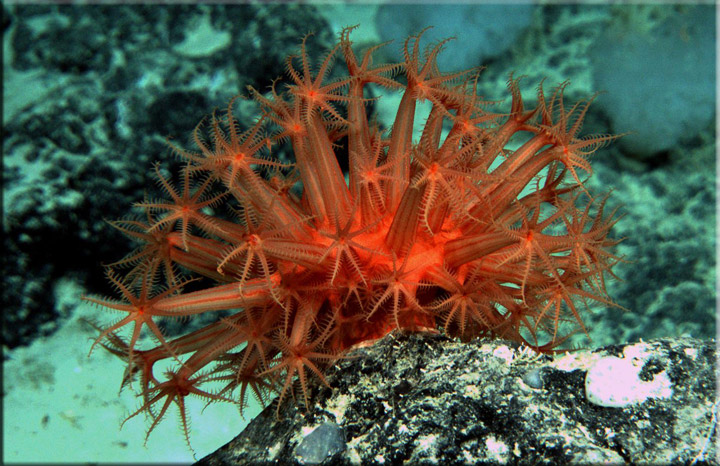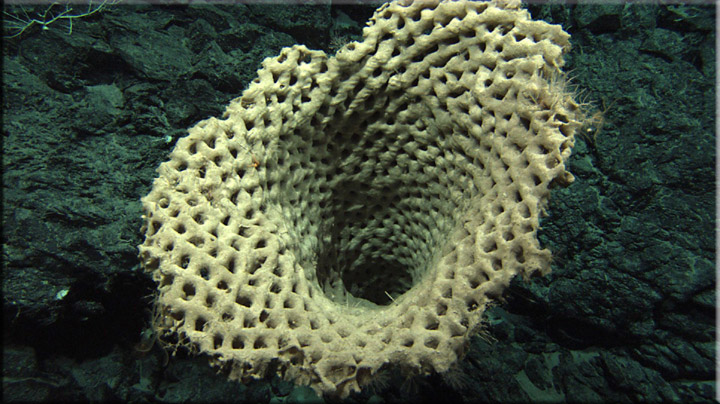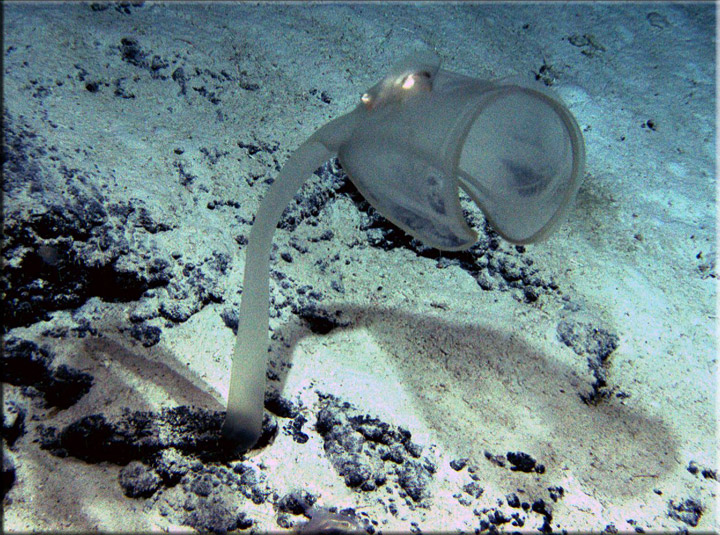 |
|||||||||||
| Scientific sub makes deep-sea discoveries | |||||||||||
Jan 19, 2009 A four-week expedition to explore the deep ocean south-west of Tasmania has revealed new species of animals and more evidence of impacts of increasing carbon dioxide on deep-sea corals. The collaborative voyage of US and Australian researchers was led by chief scientists Dr Jess Adkins from the California Institute of Technology and Dr Ron Thresher from CSIRO's Climate Adaptation and Wealth from Oceans Flagships.
"We set out to search for life deeper than any previous voyage in Australian waters," Dr Thresher says. "We also gathered data to assess the threat posed by ocean acidification and climate change on Australia's unique deep-water coral reefs." The survey through the Tasman Fracture Commonwealth Marine Reserve, south-west of Tasmania, explored the near vertical slice in the earth's crust, known as the Tasman Fracture Zone, which drops from approximately 2000 metres to over 4000 metres. "Our sampling documented the deepest known Australian fauna, including a bizarre carnivorous sea squirt, sea spiders and giant sponges, and previously unknown marine communities dominated by gooseneck barnacles and millions of round, purple-spotted sea anemones."All of these new species are located more than 2000 metres below the surface.
Vast fields of fossil corals were discovered below 1400 metres, and dated to more than 10,000 years old. The samples collected will be used to determine the periods over the last millions of years when reefs have existed south of Tasmania. They will also provide ancient climate data that contribute to models of regional and global climate change, based on historical circulation patterns in the Southern Ocean. Modern-day deep-water coral reefs were also found, however there is strong evidence that this reef system is dying, with most reef-forming coral deeper than 1300 metres newly dead. "We need to closely analyse the samples and measurements we collected before we can determine what's caused this, as it could be the result of several factors, such as ocean warming, disease or increasing ocean acidity," Dr Thresher says. "Mathematical models predict that we could be seeing impacts of ocean acidification in this region. If our analysis identifies this phenomenon as the cause of the reef system's demise, then the impact we are seeing now below 1300 metres might extend to the shallower portions of the deep-reefs over the next 50 years, threatening this entire community."
Adapted from materials provided by CSIRO Australia via EurekAlert!, a service of AAAS |
|||||||||||


